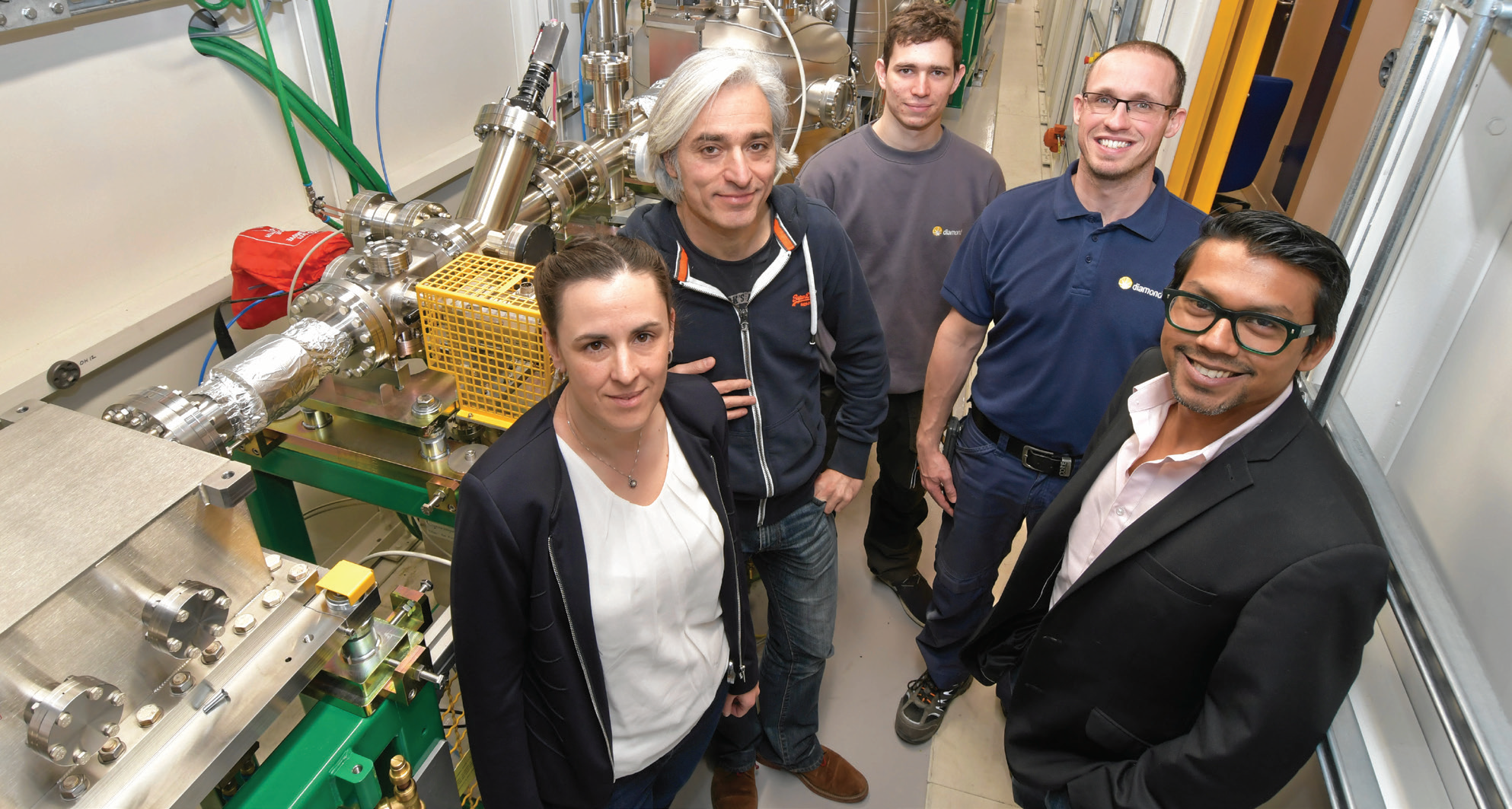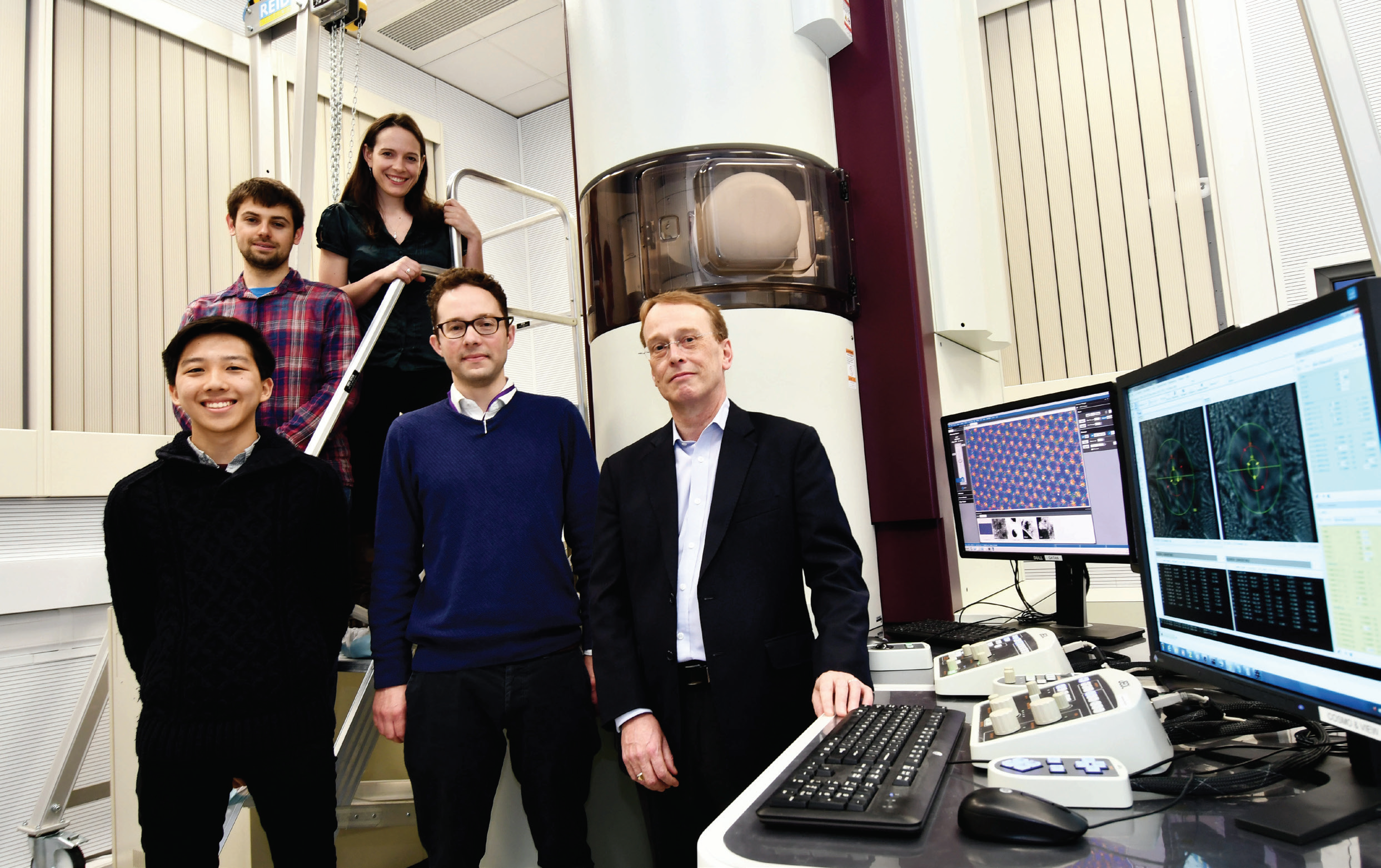Keep up to date with the latest research and developments from Diamond. Sign up for news on our scientific output, facility updates and plans for the future.

The Scanning X-ray Microscopy (SXM) beamline (I08) is for morphological, elemental and chemical speciation on a broad range of organic-inorganic interactions in a 250 - 4400 eV photon energy range, and sample investigations under ambient or cryogenic conditions. I08 has a range of applications including biological and biomedical sciences, earth and environmental science, geochemistry, and materials science. The main activity on I08 over the past year has been designing, constructing and testing various aspects of a new soft X-ray spectro- and tomo-ptychography branchline (J08). This new branchline is expected to be available for experiments in early 2020 and will provide spatial resolutions down to a few nm, providing a step change in imaging performance.
The Dual Imaging and Diffraction (DIAD) beamline will be the first beamline to offer two X-ray microscopy techniques (imaging and diffraction) applied synchronously with a switching time of 0.1s. This enables in situ structural characterisation experiments taking advantage of both techniques simultaneously. DIAD is being built to use light from a ten pole permanent magnet wiggler. The diffraction technique is conducted using monochromatic light, whereas the imaging technique can be performed with monochromatic or polychromatic (‘pink’) beam. The X-ray energy can be chosen separately for both techniques in the range from 8 - 38 keV. The beamline has completed construction of the Optics Hutch and took first light in December 2018. Next to a standard tomography setup, a mechanical test-rig for diffraction and tomography will be one of the main instruments to allow in situ experiments for a variety of scientific disciplines such as engineering and materials science, bio-materials and hard tissues, geology and mineralogy, and soil-plant interactions. The commissioning activities and construction of the experimental end station are ongoing with first users expected in early-mid 2020.
Different contrast mechanisms allow for imaging of sample properties such as elemental composition, density and structure.

The I13 Imaging and Coherence beamline is for multiscale imaging in the energy range of 6 - 30 keV. The achievable resolution ranges from several microns to some tens of nanometers with two branchlines operating independently for this purpose. The Diamond Manchester Imaging branchline performs mainly in-line phase contrast tomography with a strong emphasis on dedicated sample environments. A new full-field microscope using Zernike phase contrast imaging over a field of view of 50-100 μm and a resolution of 50 - 100 nm is now in operation, with a growing user community, allowing us to identify nano-sized structures under dynamic conditions. The highest spatial resolution, of 30 nm, is achieved on the coherence branch with ptychographic imaging. Continuous improvements such as new piezo stages and improved detector interfaces have reduced ptycho-tomography scans from days to a few hours, and ongoing fly-scanning developments aim to reduce this even further. Ptychography is now a routine standard user experiment and more advanced imaging modes such as 3D Bragg ptychography and simultaneous transmission and Bragg geometry measurements have been demonstrated and developed with users.
Diamond Light Source is the UK's national synchrotron science facility, located at the Harwell Science and Innovation Campus in Oxfordshire.
Copyright © 2022 Diamond Light Source
Diamond Light Source Ltd
Diamond House
Harwell Science & Innovation Campus
Didcot
Oxfordshire
OX11 0DE
Diamond Light Source® and the Diamond logo are registered trademarks of Diamond Light Source Ltd
Registered in England and Wales at Diamond House, Harwell Science and Innovation Campus, Didcot, Oxfordshire, OX11 0DE, United Kingdom. Company number: 4375679. VAT number: 287 461 957. Economic Operators Registration and Identification (EORI) number: GB287461957003.